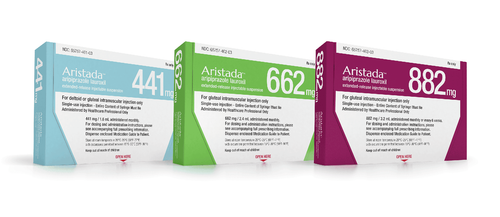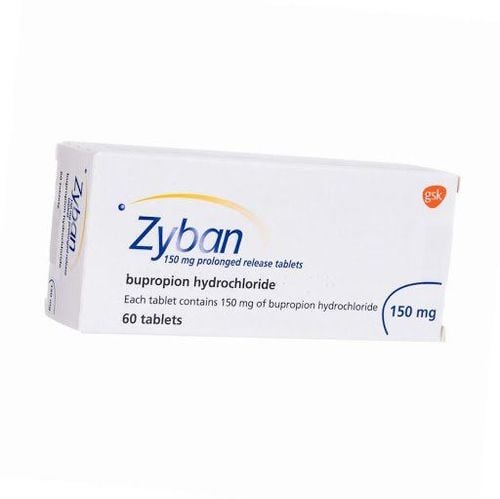This is an automatically translated article.
Varenicline is a psychotropic drug, prepared in the form of film-coated tablets, with a strength of 0.5 mg or 1 mg. Varenicline is used to help people quit smoking. Detailed information of the drug Varenicline is presented in the article below.
1. What is Varenicline?
Varenicline is made in the form of film-coated tablets, each containing 0.5 mg or 1 mg of Varenicline, used to support smoking cessation.
Mechanism of action of varenicline: Varenicline binds with high affinity and selectively to the neuronal acetylcholine nicotine receptors α4β2, to stimulate receptor-mediated activity, but to a lesser extent compared to nicotine. Varenicline acts on α4β2 receptors to help alleviate symptoms of craving and withdrawal (agonist activity), and varenicline reduces the effects of smoking by blocking nicotine binding to α4β2 receptors .
Varenicline stimulates the production of Nicotine right in the cells, through which the human body will send out a signal similar to smoking a cigarette. Therefore, this medication is used in conjunction with a smoking cessation program (eg, counseling, support groups, educational materials) to help you quit smoking.
2. Dosage and usage of the drug Varenicline
2.1 Dosage of Varenicline The dose of Varenicline is based on your medical condition, response to treatment with Varenicline and is determined by your doctor.
For adults
The starting dose and dose adjustment of Varenicline is as follows:
From day 1 to day 3: dose 0.5mg x 1 time/day From day 4 to day 8: dose 0.5mg x 2 times/day From Day 8 to the end of treatment: dose 1mg x 2 times/day For the elderly
No need to adjust the dose of Varenicline. For patients with renal impairment
Mild renal impairment (50 ml/min < eGFR ≤ 80 ml/min) to moderate (30 ml/min ≤ eGFR ≤ 50 ml/min): No dose adjustment is required. With moderate renal impairment, adverse reactions cannot be tolerated, the dose can be reduced to 1 mg once daily. Severe renal impairment (eGFR < 30 ml/min): Start with 0.5 mg once daily for the first 3 days; Then 1 mg x 1 time / day (or 0.5 mg x 2 times / day). Patients on hemodialysis: Maximum dose of 0.5 mg x 1 time / day if the patient tolerates the drug. For people with liver failure
No need to adjust the dose of Varenicline. 2.2 How to use Varenicline Swallow Varenicline tablets whole with filtered water. Food does not affect the absorption of varenicline.
It is advisable to anticipate the date of cessation of smoking and to start taking Varenicline 1 week before that date. Treatment with varenicline for a period of 12 weeks.
Remember to take varenicline at the same time every day.
Treatment with varenicline for 12 weeks. For those who have successfully quit smoking by the end of week 12, an additional 12 week course of varenicline 1mg twice daily should be considered to increase the likelihood of long-term withdrawal.
For those who have failed to quit smoking after 12 weeks of treatment, or who have relapsed after treatment, another course of treatment should be instituted after the cause of the failure has been identified.
For those who do not want or cannot quit smoking suddenly, it is possible to quit smoking gradually: In the first 4 weeks, reduce the amount of cigarettes smoked by 50%; for the next 4 weeks, reduce smoking by another 50%. Then continue to reduce smoking until completely quit smoking after 12 weeks. Continue using Varenicline for an additional 12 weeks, for a total of 24 weeks. Encourage and encourage patients to try to quit smoking sooner if they are ready.
For those who cannot tolerate the adverse reactions of varenicline, the dose may be reduced temporarily or permanently to 0.5mg twice daily.
Do not take Varenicline more than 1 mg twice a day.
2.3 Overdose, missed dose when using Varenicline In case of overdose with Varenicline, contact your doctor immediately or go to the nearest medical facility if you have any unusual symptoms. If you forget to take a dose of Varenicline, take it as soon as you remember. If it is almost time for your next dose, skip the missed dose. Do not double the prescribed dose of Varenicline.
3. Contraindications of the drug Varenicline
Varenicline drug is not used for people with a history of allergy to Varenicline or hypersensitivity to any of its ingredients.
4. Varenicline side effects
Common side effects:
Nasopharyngitis, sinusitis, flu, bronchitis, cough, difficulty breathing. Decreased or increased appetite, weight gain, insomnia, unusual dreams. Headache, dizziness, drowsiness, arrhythmia, chest discomfort, chest pain, nausea, gastroesophageal reflux, constipation, dyspepsia, abdominal distension, flatulence, abdominal pain, diarrhea. Toothache, dry mouth, itching, muscle pain, joint pain, back pain, fatigue, abnormal liver function. Uncommon side effects:
Viral infections, fungal infections, diabetes, conjunctivitis, eye pain Suicidal thoughts, panic, aggression, unusual thinking, restlessness, mood swings, depression anxiety, hallucinations, increased or decreased sex drive. Convulsions, tremors, coma, tinnitus, myocardial infarction, hypertension, angina pectoris, tachycardia, palpitations, hot flashes. Gastritis, stomatitis, sore gums. Erythema, acne, increased sweating, night sweats, muscle spasms, nocturia, fever, weakness, menorrhagia. Rare side effects:
Thrombocytopenia, sleepwalking, abnormal behavior, psychosis. Cerebrovascular accident, brain depression, difficulty speaking, abnormal coordination of movements, dilated pupils, photophobia, atrial fibrillation, vomiting blood, abnormal stools. Severe skin reactions, angioedema, polyuria, transient loss of consciousness.
5. Notes when using the drug Varenicline
Read the instructions for use of Varenicline carefully before you start using this medicine and each time you use it again.
Do not increase your dose of Varenicline on your own or take it more often than prescribed. Because it can increase your risk of serious side effects.
At the end of treatment, discontinuation of varenicline results in irritability, cravings, depression, and insomnia in about 3% of patients.
Changes in thinking or behavior such as: anxiety, psychosis, mood swings, aggressive behavior, suicidal ideation and behavior, suicide attempts, depression have been reported in varinciline-treated patients.
Smoking cessation has been linked to worsening of an underlying mental illness. For patients with a history of mental illness, caution and careful counseling are required.
There have been reports of seizures in patients with or without a history of seizures treated with varenicline. Use with caution in people with a history of seizures.
The risks and benefits of varenicline use in people with cardiovascular disease need to be weighed.
Varenicline may cause drowsiness, dizziness, transient loss of consciousness, which in turn may affect the ability to drive and use machines. Do not use the drug before driving or using machines.
6. Varenicline drug interactions
Interactions of varenicline with other drugs:
Cimetidine increases blood levels of varenicline by 29%. Concomitant administration of varenicline and transdermal nicotine replacement therapy (NRT) for 12 days resulted in a decrease in mean systolic blood pressure and an increased incidence of nausea, headache, vomiting, dizziness, and fatigue. . Interactions of Varenicline with food:
Varenicline may increase the intoxicating effect of alcohol; abnormal, aggressive behavior. Varenicline is used to help people who want to quit smoking. When using Varenicline, you should absolutely follow your doctor's instructions. Contact your doctor immediately if you have any questions about Varenicline.
Please dial HOTLINE for more information or register for an appointment HERE. Download MyVinmec app to make appointments faster and to manage your bookings easily.













